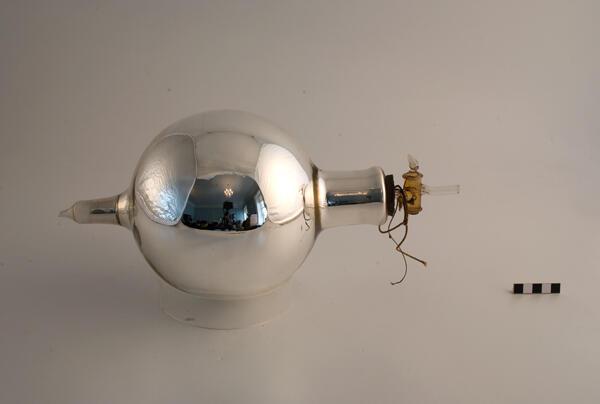Date: 1892
Place made: Royal Institution
Alternative name: Dewar flask, thermos flask, early isolation vessel
Materials: Glass, tin, wax
Measurements: Height: 350mm diameter: 128mm

Description
This vessel consists of glass flasks fitted one inside the other and sealed at the neck with a partial vacuum between them. The central flask is therefore insulated, keeping the contents cold and slowing down evaporation.
James Dewar invented the flask in the course of his cryogenic research; he had been interested in liquid gases for over ten years, first demonstrating the research of others (performing the first public demonstration in Britain of the liquefaction of oxygen) and then beginning his own investigations. Forcing gases to the extremely low temperatures at which they become liquid was a very expensive process so it was important to keep them liquid long enough to investigate their properties.
Dewar had developed a vacuum insulated goblet in 1872 in collaboration with Peter Tait at Edinburgh in order to keep substances warm. Twenty years later he took a similar idea to create a vacuum jacketed flask. The flask, with its narrower neck, was designed especially to keep substances very cool. This initial design was later improved by narrowing the neck even further and putting a silvered coating on the outside to minimise heat loss. The flask was exhibited at the Ri for the first time on Christmas Day 1892.
Dewar went on to become the first person to create liquid hydrogen in 1898 and while he was nominated several times for a Nobel Prize for his low-temperature research he never won. Ironically, after falling out with Alfred Nobel over the patent for cordite, Dewar never patented his invention of the flask. It was patented and renamed for industrial use in 1904 by the Thermos company, set up by two German glassblowers who recognised its potential to keep liquids warm as well as cool.
Where can I view this object?
This object is currently on display on the lower ground floor of the Royal Institution in the Faraday Museum.